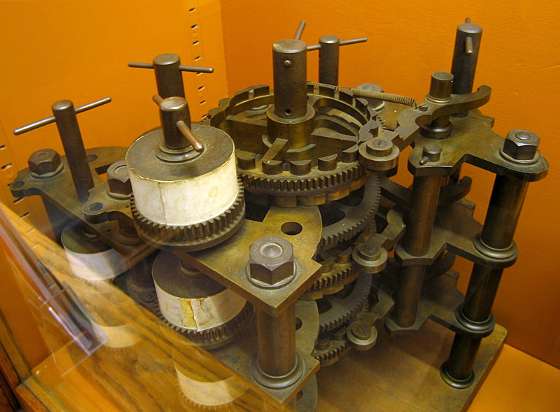| When Lovelace Met Babbage |
| Written by Historian | |||
| Sunday, 05 June 2011 | |||
|
Ada Countess of Lovelace is recognized as being the first computer programmer due to her involvement in Charles Babbage's project to build his Analytical Engines. Their first meeting took place on June 5th 1833 when Babbage demonstrated a portion of his Difference Engine No 1 in London.
Ada who was the only legitimate daughter of the poet Lord Byron was born in 1815 and she was only 18 when she met Babbage. Whatever affections there may have been between Ada and Babbage, it is worth stating that he was a year older than Ada's mother and the relationship must have been a difficult one. Ada's mother, who was interested in mathematics, was present with her daughter at a demonstration of the partly finished difference engine - and understood what she saw. Her account of its workings clearly indicate that she was capable of understanding the mathematical content of the presentation as well: "It raised several Nos. to the 2nd and 3rd powers, and extracted the root of a quadratic equation.." but she didn't seem to understand its operating principles: "..I had but faint glimpses of the principles by which it worked..". Lady Byron seems to have enjoyed the demonstration but its effect on Ada lasted all her life. Ada not only understood the difference engine but also grasped its potential. De Morgan (of De Morgan's Laws) was with her and he writes: "While other visitors gazed at the workings of the beautiful instrument with the sort of expression, and I dare say the sort of feeling, that some savages are said to have shown on first seeing a looking-glass or hearing a gun - if indeed, they had a strong an idea of its marvelousness - Miss Byron, young as she was, understood its working, and saw the great beauty of the invention."
The Difference Engine project was abandoned in the same year (1833) and Babbage moved on to designing his Analytical Engine, which was so large that it would have needed a steam engine to turn the handle. Ada's passion for the analytical engine grew as she learned more and more about it. She attended a course of lectures on it and eventually came to understand its working better than Babbage. This isn't as strange an occurrence as it might sound because it is often the case that someone learning the structure of a machine will ask more questions about its operation than the inventor has thought to ask. She made her first contribution to the furtherment of the machine by translating a paper (in French) by the Italian engineer Menabrea, "Sketch of the Analytical engine invented by Charles Babbage Esq". Babbage asked why she didn't write it herself as she certainly knew enough not to have need to translate something. In fact the translated paper was far less important than the copious notes that she wrote following it - the notes were three times longer than the original paper. The annotations clearly demonstrate that she had made the leap of imagination necessary to see that the program, the software, was as important as the machine. The machine is merely the vehicle for the idea embodied in the program For more seeAda Lovelace, the first programmer Plans to build Babbage's Analytical Engine To be informed about new articles on I Programmer, sign up for our weekly newsletter, subscribe to the RSS feed and follow us on Twitter, Facebook or Linkedin.
<ASIN:0670910201> <ASIN:1603860924> <ASIN:0912647094> <ASIN: 0071388605> |
|||
| Last Updated ( Monday, 26 December 2016 ) |

